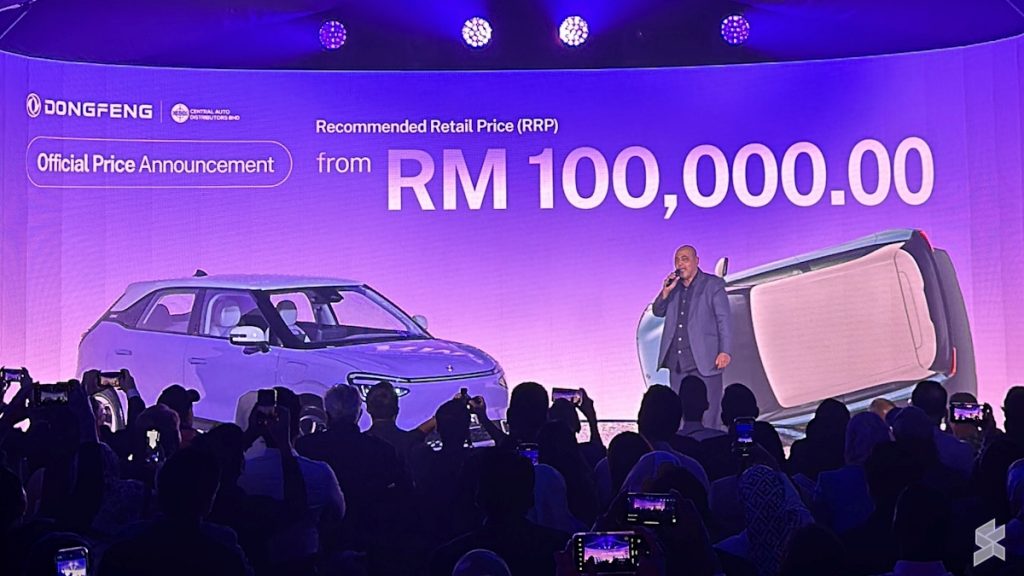This time around, we’re taking a look at the very best of Apple, and the very best of ASUS… side-by-side. In other words, we’ll be comparing the Apple iPhone 15 Pro Max vs ASUS ZenFone 11 Ultra. The ZenFone 11 Ultra is a bit newer phone, as it launched in March this year. The iPhone 15 Pro Max arrived in September last year. The point is, both devices are current-gen devices, and are flagship offerings from the two companies.
These two phones are vastly different, though, and that should make this comparison rather interesting. We’ll first list their specifications, as we usually do in our comparisons. Following that, we’ll check out their designs, displays, performance, battery life, cameras, and audio output. Let’s see what these two smartphones have to offer.
Specs
Apple iPhone 15 Pro Max vs ASUS ZenFone 11 Ultra, respectively
– Screen size:
6.7-inch Super Retina XDR display with ProMotion (flat, 120Hz, HDR10, 2,000 nits)
6.78-inch LTPO AMOLED 2X (flat, 144Hz, 2,500 nits max brightness)
– Display resolution:
2796 x 1290
2400 x 1080
– SoC:
Apple A17 Pro
Google Tensor G3
– RAM:
8GB
12GB/16GB (LPDDR5X)
– Storage:
256GB/512GB/1TB (NVMe)
256GB/512GB (UFS 4.0)
– Rear cameras:
48MP (f/1.78 aperture, second-gen sensor-shift OIS), 12MP (ultrawide, f/2.2 aperture, 120-degree FoV, macro photography), 12MP (telephoto, f/2.8 aperture, 5x optical zoom)
50MP (wide, 24mm lens, gimbal OIS), 13MP (ultrawide, 120-degree FoV, f/2.2 aperture), 32MP (telephoto, 3x optical zoom, f/2.4 aperture)
– Front cameras:
12MP (f/1.9 aperture) + TrueDepth
32MP (wide, f/2.5 aperture)
– Battery:
4,422mAh
5,500mAh
– Charging:
20W wired, 15W wireless (MagSafe & Qi2), 7.5W wireless (Qi), reverse wired charging (charger not included)
65W wired, 15W wireless, 10W reverse wired (charger not included)
– Dimensions:
159.9 x 76.7 x 8.25mm
163.8 x 76.8 x 8.9mm
– Weight:
221 grams
224 grams
– Connectivity:
5G, LTE, NFC, Wi-Fi, USB Type-C, Bluetooth 5.3/5.4
– Security:
3D facial scanning
In-display fingerprint scanner (optical)
– OS:
iOS 17
Android 14 with ZenUI
– Price:
$1,199
$899+
– Buy:
Apple iPhone 15 Pro Max (Apple)
ZenFone 11 Ultra (Amazon)
Apple iPhone 15 Pro Max vs ASUS ZenFone 11 Ultra: Design
You’ll notice the very first differences the moment you lay your eyes on both smartphones. Both of them are made out of metal and glass, but they look entirely different. On top of that, different metal alloys are used for the frame. The iPhone 15 Pro Max utilizes titanium, while the ZenFone 11 Ultra’s frame is made out of aluminum. You’ll also notice that the corners on the iPhone 15 Pro Max are more rounded in comparison.
The iPhone 15 Pro Max has a flat display and a pill-shaped camera cutout. Its bezels are very thin all around. The ZenFone 11 Ultra has a flat display too, but it has a display camera hole and thin bezels around its panel. The iPhone 15 Pro Max has a power/lock button on the right. On the left, you’ll find the volume up and down buttons, and an Action Button above them. All the physical buttons sit on the right-hand side of the ZenFone 11 Ultra.
If we flip the two phones over, you’ll notice even more differences. The iPhone 15 Pro Max has a recognizable triple camera setup on the back. Its camera island is located in the top-left corner. The ZenFone 11 Ultra includes three cameras on the back as well, but a differently-looking camera island. It’s located in the same spot as the one on the iPhone 15 Pro Max, though.
The ASUS ZenFone 11 Ultra does include a slightly larger display. The phone itself is slightly taller, while they’re basically identical in terms of width. The ZenFone 11 Ultra is slightly thicker and heavier. The difference is not really noticeable, to be quite honest. Both smartphones are IP68 certified for water and dust resistance, and both phones are quite slippery.
Apple iPhone 15 Pro Max vs ASUS ZenFone 11 Ultra: Display
The iPhone 15 Pro Max includes a 6.7-inch 2796 x 1290 LTPO Super Retina XDR OLED display. That panel is flat and it supports an adaptive refresh rate of up to 120Hz. HDR10 content is also supported, and the same goes for Dolby Vision. Its brightness goes up to 2,000 nits. The display aspect ratio here is 19.5:9, and the screen-to-body ratio is at around 89 percent. The Ceramic Shield glass protects this display.

The ZenFone 11 Ultra, on the other hand, includes a 6.78-inch fullHD+ (2400 x 1080) LTPO AMOLED display. This panel has an adaptive refresh rate of up to 144Hz, but it will go that high only in some games. During regular use, you can hit 120Hz. It supports HDR10 content, and its brightness goes up to 2,500 nits. The display aspect ratio is 20:9, while the screen-to-body ratio is at around 88 percent. The Gorilla Glass Victus 2 protects this panel.
Both of these smartphones are very, very good. They’re vivid, sharp enough, have great viewing angles, and the touch response is also good. They also do get bright enough when you need them too. The iPhone’s panel is sharper, while the ZenFone’s gets slightly brighter. Both panels do have deep blacks and are generally a joy to use. There’s not much to complain about here, to be quite honest.
Apple iPhone 15 Pro Max vs ASUS ZenFone 11 Ultra: Performance
The iPhone 15 Pro Max is fueled by the Apple A17 Pro processor, which is a 3nm chip. This processor is immensely powerful, needless to say. Apple combines that with 8GB of RAM and NVMe flash storage. The ZenFone 11 Ultra, on the flip side, is fueled by the Snapdragon 8 Gen 3 chip. That is a 4nm chip, and the very best Qualcomm has to offer at the moment. That is combined with up to 16GB of LPDDR5X RAM, and UFS 4.0 flash storage.
These two phones have immensely different software builds, but both perform excellently. Day-to-day performance is very snappy, some of the best on the market. The iPhone 15 Pro Max is running iOS, of course, while the ZenFone 11 Ultra has one of the best Android skins out there… at least as far as sheer performance is concerned. They handle opening apps, multitasking, browsing, image editing, and various other tasks without a problem. Lag is nowhere to be found.
When it comes to gaming, both smartphones do a great job. That even goes for the most demanding titles you can think of. Genshin Impact runs very smoothly on both smartphones. Both devices do get quite warm after a longer gameplay session, but we did not notice any issues in terms of performance itself. Both smartphones passed the test with flying colors.
Apple iPhone 15 Pro Max vs ASUS ZenFone 11 Ultra: Battery
The iPhone 15 Pro Max includes a 4,441mAh battery, while the ZenFone 11 Ultra has a 5,500mAh unit on the inside. Apple’s iPhones usually have smaller battery packs than their Android counterparts, so this is not surprising. In fact, both smartphones offer really good battery life. Crossing the 7-hour screen-on-time mark has proven to be an easy task for both of these smartphones.
If you’re really careful, you can go over the 8-hour mark. With regular usage, without babying the phone, but without gaming involved, we managed to cross that 7-hour screen-on-time mark without a problem on both. Do note that graphically-intensive things change things, of course. Your mileage may also vary. We used both devices mostly on Wi-Fi, and the signal was good in general.
When charging is concerned, ASUS’ flagship has the advantage. It can charge at 65W, compared to 20W charging of the iPhone 15 Pro Max. Both smartphones do support 15W wireless charging, though it’s not the same. 15W wireless charging on the iPhone 15 Pro Max works only with MagSafe and Qi2. The ZenFone 11 Ultra’s works with Qi as well. The iPhone 15 Pro Max supports 4.5W reverse wired charging, while the ZenFone 11 Ultra offers 10W reverse wired charging. Neither phone comes with a charger in the box.
Apple iPhone 15 Pro Max vs ASUS ZenFone 11 Ultra: Cameras
The iPhone 15 Pro Max has three cameras on the back, the same as ASUS’ flagship. Their setups are different, though, of course. Apple’s handset includes a 50-megapixel main camera, a 12-megapixel ultrawide unit (120-degree FoV), and a 12-megapixel periscope telephoto camera (5x optical zoom). The ZenFone 11 Ultra, on the other hand, has a 50-megapixel main camera, a 13-megapixel ultrawide unit, and a 32-megapixel telephoto camera (3x optical zoom).


When it comes to the quality of their photos, both do a good job, in a different way. The iPhone 15 Pro Max leans towards warmer tones, while the ZenFone 11 Ultra tends to provide overprocessed images more often than it should. Both provide plenty of detail during the daytime, and the images usually end up looking well-balanced. Well, other than the overprocessing issue with the ZenFone 11 Ultra. Both ultrawide cameras do a good job, and follow the color science of the main cameras really well. In regards to high-zoom photos, the iPhone 15 Pro Max takes the cake in all lighting situations.
In low light, both phones perform well, though the iPhone 15 Pro Max prefers to leave images a bit darker than the ZenFone 11 Ultra. That’s not a bad thing at all, as the images from Apple’s flagship do end up looking better most of the time. That is especially true if we’re talking about the main camera. The video recording is also better on the iPhone 15 Pro Max’s end.
Audio
Both of these phones include stereo speakers. The ones on the iPhone 15 Pro Max are louder, though, but not by much. The sound output from both setups is really good, there’s nothing to worry about here.
When it comes to an audio jack, only the ZenFone 11 Ultra has it. You can always utilize the iPhone 15 Pro Max’s Type-C port for the same purpose, though. In regards to wireless audio connectivity, the iPhone 15 Pro Max comes with Bluetooth 5.3, while the ZenFone 11 Ultra includes Bluetooth 5.4 support.



